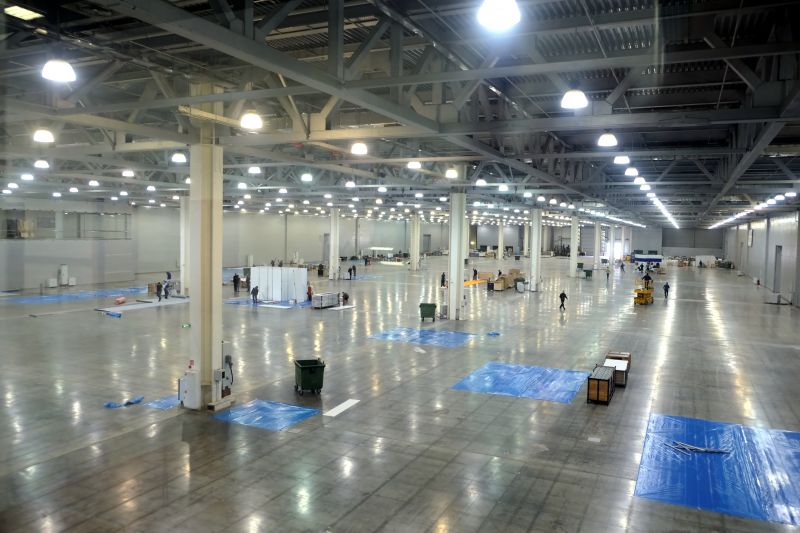Expert Picks for Industrial Lighting Service Equipment
Find top-rated lighting tools and accessories trusted by professionals to improve installation, repair, and inspection tasks.
 Industrial lighting service encompasses a broad range of products designed to illuminate large, often complex environments such as factories, warehouses, manufacturing plants, and other commercial facilities. These lighting solutions are engineered to provide reliable, durable, and efficient illumination that supports safety, productivity, and operational requirements. Given the demanding conditions of industrial settings, lighting products must withstand factors like dust, moisture, vibrations, and temperature fluctuations. As a result, selecting the appropriate lighting equipment involves understanding various product features, such as durability, brightness levels, energy efficiency, and ease of maintenance.
Industrial lighting service encompasses a broad range of products designed to illuminate large, often complex environments such as factories, warehouses, manufacturing plants, and other commercial facilities. These lighting solutions are engineered to provide reliable, durable, and efficient illumination that supports safety, productivity, and operational requirements. Given the demanding conditions of industrial settings, lighting products must withstand factors like dust, moisture, vibrations, and temperature fluctuations. As a result, selecting the appropriate lighting equipment involves understanding various product features, such as durability, brightness levels, energy efficiency, and ease of maintenance.
Top Overall Option
High-Performance LED Industrial Light Fixture
This versatile LED fixture is designed for demanding industrial environments, offering high brightness levels, robust construction, and energy-efficient operation. Its durable housing and sealed design make it suitable for dusty, wet, or hazardous locations. The fixture provides uniform illumination, reducing shadows and enhancing visibility, which can contribute to safety and productivity. Its long lifespan and low maintenance requirements make it a practical choice for industrial applications, supporting operational continuity over time.
Types of Products For Industrial Lighting Service
High Bay LED Lights
Designed for high ceilings, these lights provide powerful illumination for large spaces such as warehouses and manufacturing floors.
Low Bay LED Lights
Ideal for areas with lower ceilings, offering efficient lighting for workshops and storage rooms.
Explosion-Proof Fixtures
Built to operate safely in hazardous environments with flammable gases or dust, ensuring safety compliance.
Vapor Tight LED Fixtures
Sealed to prevent dust and moisture ingress, suitable for outdoor or damp industrial settings.
Floodlights
Provide broad, intense illumination for outdoor areas, loading docks, or large equipment.
Strip Lights
Flexible and versatile, ideal for illuminating workbenches, conveyor belts, or storage aisles.
Portable Work Lights
Offer mobility and convenience for temporary or task-specific lighting needs.
Emergency and Exit Lighting
Ensure safety during power outages or emergencies with reliable backup lighting solutions.
Task Lighting
Focused lighting designed to illuminate specific work areas or machinery for detailed tasks.
Smart Industrial Lighting Systems
Integrate with building management for remote control, scheduling, and automation.
Pendant and Surface-Mounted Fixtures
Provide versatile mounting options for various industrial ceiling types.
Infrared and UV Lighting
Specialized lighting for inspection, curing, or other industrial processes.
Popular Choices
Widely used in large indoor spaces, these fixtures are appreciated for their brightness and energy efficiency.
Popular for outdoor and damp environments due to their sealed design and durability.
Frequently selected for hazardous locations requiring safety-compliant lighting solutions.
Commonly used to illuminate outdoor work areas and large equipment.
Favored for their mobility and quick deployment in various industrial tasks.
Trending for their automation capabilities and remote management features.
Popular for warehouses and retail spaces with lower ceilings.
Chosen for their flexibility and effectiveness in task-specific applications.
Essential in facilities prioritizing safety during outages.
Used for specialized industrial inspections and maintenance.
Modern industrial lighting options include a variety of fixture types, from high bay and low bay lights to explosion-proof fixtures suitable for hazardous locations. LED technology dominates the market due to its long lifespan, low energy consumption, and minimal maintenance needs. Additionally, lighting controls such as dimming systems, motion sensors, and automated timers can enhance operational efficiency and safety by ensuring that lighting is used only when needed. Proper lighting not only improves visibility but also helps in reducing accidents and increasing overall workplace productivity.
When considering industrial lighting solutions, it is essential to evaluate the specific requirements of the environment, including ceiling height, ambient conditions, and the nature of tasks performed. Proper installation and ongoing maintenance are critical to ensure sustained performance and safety compliance. As technology advances, options like smart lighting systems are becoming more prevalent, offering remote management and integration with building management systems. Ultimately, choosing the right lighting products involves balancing performance, longevity, and cost-effectiveness to meet the unique demands of each industrial setting.
Key Buying Considerations
- Assess the environmental conditions where the lighting will be installed, including dust, moisture, and temperature ranges.
- Determine the appropriate fixture type based on ceiling height and space size, such as high bay or low bay lights.
- Evaluate the brightness level needed, typically measured in lumens, to ensure adequate illumination for tasks.
- Consider energy efficiency features, especially if long-term operational costs are a concern.
- Check the durability and build quality to withstand physical impacts, vibrations, and harsh conditions.
- Ensure compatibility with existing electrical systems and consider the availability of dimming or control options.
- Review maintenance requirements and fixture lifespan to minimize downtime and replacement costs.
- Prioritize safety features, such as explosion-proof ratings or sealed enclosures for hazardous environments.
- Explore options for automation or smart controls for enhanced operational flexibility.
- Verify compliance with relevant industrial safety standards and certifications.
- Factor in installation complexity and whether professional assistance is needed.
- Assess the availability of replacement parts and ongoing support from manufacturers or suppliers.
- Consider the overall cost-effectiveness, balancing upfront investment with operational savings.
- Think about future scalability or adaptability of the lighting system for evolving needs.
